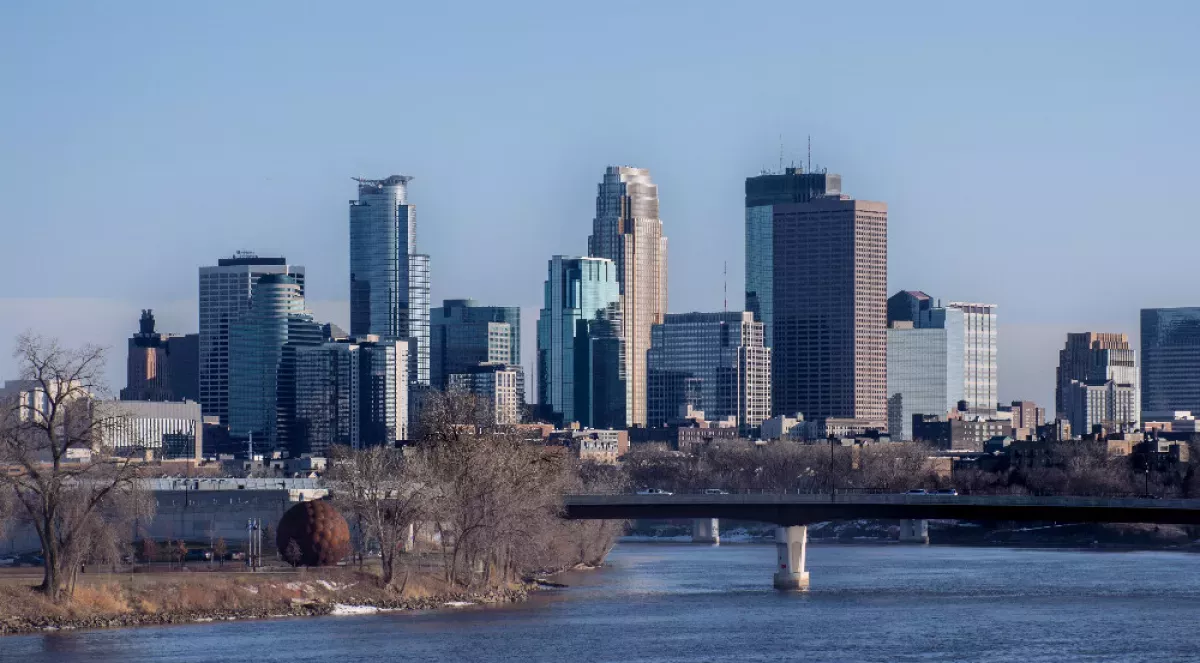Minneapolis, the most populous city in Minnesota, is located on the Mississippi River and adjoins Saint Paul, forming the 'Twin Cities' metropolitan area. Known as the 'City of Lakes', it boasts numerous lakes, wetlands, and a connected park system via the Grand Rounds National Scenic Byway. The city is built on an artesian aquifer and experiences a climate of cold, snowy winters and hot, humid summers. Its population was 429,954 as of the 2020 census.
1900: Minneapolis attracts skilled workers
Around 1900, Minneapolis began attracting skilled workers, who utilized their expertise from the University of Minnesota.
1900: Minneapolis mills America's grain
In 1900, Minneapolis milled fourteen percent of America's grain, with about one third of that being shipped overseas.
1900: Arrival of Italian, Greek, Slovak, and Czech Immigrants
In 1900, Minneapolis welcomed Italian and Greek immigrants, while Slovak and Czech immigrants settled in the Bohemian Flats area along the Mississippi River.
1902: Mayor Doc Ames tries to leave town
In 1902, Mayor Doc Ames, after running the city into crime, tried to leave town.
1905: Creation of Russian Orthodox Seminary
In 1905, St. Mary's Orthodox Cathedral created a Russian Orthodox seminary.
1910: Introduction of Restrictive Covenants
Before 1910, the city was relatively unsegregated. In 1910, a developer wrote the first restrictive covenant based on race and ethnicity into a Minneapolis deed.
1915: Opening of Minneapolis Institute of Art
In 1915, one-seventh of the vast complex designed by McKim, Mead & White for the Minneapolis Institute of Art was built and opened.
1916: Peak flour production
In 1916, Minneapolis reached peak flour production at 18.5 million barrels.
1918: Antisemitism in Minneapolis begins
From the end of World War I in 1918 until 1950, antisemitism was commonplace in Minneapolis.
1919: Closure of Weyerhauser mill
By 1919, sawmills in Minneapolis, including the Weyerhauser mill, had closed, marking the decline of the lumbering industry in the city.
1921: Ku Klux Klan presence in Minneapolis
From 1921 until 1923, the Ku Klux Klan was a force in Minneapolis.
1923: Munsingwear becomes largest underwear manufacturer
In 1923, Munsingwear became the world's largest manufacturer of underwear.
1923: Ku Klux Klan presence in Minneapolis ends
The Ku Klux Klan's influence in Minneapolis ended in 1923 after being a force in the city since 1921.
1925: Eugenics law passed
In 1925, after Minnesota passed a eugenics law, Eitel Hospital sterilized people at Faribault State Hospital.
1928: Additions to Minneapolis Institute of Art
Additions to the Minneapolis Institute of Art were made by other firms from 1928 to 2006.
1928: Construction of Temple Israel
In 1928, Temple Israel was built by the city's first Jewish congregation, Shaarai Tov.
1930: High Literacy Rate Among Black Residents
By 1930, Minneapolis had one of the nation's highest literacy rates among Black residents, though discrimination limited job opportunities.
1930: Least-snowy winter on record
The winter of 1930–1931 was the least-snowy on record with 14.2 inches of snow.
1931: Least-snowy winter on record
The winter of 1930–1931 was the least-snowy on record with 14.2 inches of snow.
1933: Enrollment Peaked
Enrollment in the school district peaked in 1933 at 90,000 students.
1934: Teamsters strikes during the Great Depression
During the summer of 1934 and the financial downturn of the Great Depression, the Citizens' Alliance refused to negotiate with teamsters, leading to strikes in May and July–August.
1935: Consumer Boycott of Breweries
In 1935, Cecil Newman and the Minneapolis Spokesman led a year-long consumer boycott of four area breweries that refused to hire Black employees.
1935: Federal laws protecting workers' rights enacted
The union victory in Minneapolis ultimately led to 1935 and 1938 federal laws protecting workers' rights.
July 1936: Highest recorded temperature in Minneapolis
In July 1936, Minneapolis recorded its highest temperature at 108 °F.
1936: Silver Shirts hold meetings
Starting in 1936, a fascist hate group known as the Silver Shirts held meetings in Minneapolis.
1938: Thermo King founded
In 1938, Frederick McKinley Jones and his associate founded Thermo King in Minneapolis.
1938: Federal laws protecting workers' rights enacted
The union victory in Minneapolis ultimately led to 1935 and 1938 federal laws protecting workers' rights.
1939: Housing Statistics
In 2023, housing units in the city built in 1939 or earlier comprised 43.7 percent of housing units in Minneapolis.
1940: Shift in Focus at Walker Art Center
Around 1940, the Walker Art Center's focus shifted to modern and contemporary art.
1949: Medtronic founded
In 1949, Medtronic was founded in a garage in Minneapolis.
1950: Increase in Black Population
Between 1950 and 1970, the Black population in Minneapolis increased by 436 percent.
1950: Antisemitism in Minneapolis ends
From the end of World War I in 1918 until 1950, antisemitism was commonplace in Minneapolis.
1950: Minneapolis Population Peak
In 1950, the Minneapolis census peaked at 521,718, marking the only time the city's population exceeded half a million.
1952: First Successful Repair of a Congenital Heart Defect
In 1952, cardiac surgeon F. John Lewis successfully repaired a child's congenital heart defect at the University of Minnesota's Variety Club Heart Hospital.
1953: Prohibition of Restrictive Covenants by State Law
In 1953, restrictive covenants against minorities were prohibited by state law.
1957: Open-Heart Surgery Successes
By 1957, more than 200 patients—most of whom were children—had survived open-heart surgery at the University of Minnesota.
1957: Control Data begins
In 1957, Control Data began in downtown Minneapolis, replacing vacuum tubes with transistors in the CDC 1604 computer.
1958: Demolition of 'skid row' begins
Between 1958 and 1963, Minneapolis began demolishing "skid row", which included 35 acres of downtown.
1959: Location of Temple of Islam
By 1959, a Temple of Islam was located in north Minneapolis.
1959: Report by US Soil Conservation Service on Minneapolis's elevation
In 1959, a report by the US Soil Conservation Service listed Minneapolis's elevation above mean sea level as 830 feet.
1961: Minnesota Vikings and Twins Arrive
In 1961, the American football team Minnesota Vikings and the baseball team Minnesota Twins began playing in the state.
1963: Demolition of 'skid row' ends
Between 1958 and 1963, Minneapolis completed the demolition of "skid row", which included 35 acres of downtown.
1963: Guthrie Theater Founded
In 1963, Tyrone Guthrie founded the Guthrie Theater. The theater featured an inventive thrust stage, a collaboration by Guthrie, designer Tanya Moiseiwitsch, and architect Ralph Rapson.
1966: Disturbances on Plymouth Avenue
In 1966 and 1967, suppressed anger among the Black population led to disturbances on Plymouth Avenue.
1967: Disturbances on Plymouth Avenue
In 1966 and 1967, suppressed anger among the Black population led to disturbances on Plymouth Avenue.
1967: Opening of I-35W
In 1967, I-35W opened, displacing Black and Mexican neighborhoods in south Minneapolis.
1968: American Indian Movement founded
In 1968, relocated Native Americans founded the American Indian Movement (AIM) in Minneapolis.
1968: Federal Fair Housing Act
In 1968, the federal Fair Housing Act prohibited restrictive covenants.
1969: Charles Stenvig becomes mayor
In 1969, Charles Stenvig, a law-and-order candidate, became mayor of Minneapolis.
1970: Arrival of Koreans and Growth of Japanese American Community
Around 1970, Koreans began arriving in Minneapolis. By 1970, the Japanese American population in Minneapolis, many relocated from San Francisco, numbered nearly 2,000, forming part of the state's largest Asian American community.
1970: Increase in Black Population
Between 1950 and 1970, the Black population in Minneapolis increased by 436 percent.
1971: Classes at Hindu Temple
In 1971, a reported 150 persons attended classes at a Hindu temple near the University of Minnesota.
1971: Same-sex couple denied marriage license
In 1971, a same-sex Minneapolis couple was denied a marriage license, despite appealing to the US Supreme Court; they later obtained a license and married.
1972: Resettlement of First Shi'a Muslim Family
In 1972, the Twin Cities' first Shi'a Muslim family resettled from Uganda.
1975: Settlement of Vietnamese, Hmong, Lao, and Cambodians
Around 1975, Vietnamese, Hmong (some from Thailand), Lao, and Cambodians settled mainly in Saint Paul, but some built organizations in Minneapolis.
1975: No Republican Mayor Elected
Since 1975, the city has not elected a Republican mayor.
1983: Snowiest winter on record begins
The snowiest winter on record was 1983–1984, when 98.6 inches of snow fell.
1984: Snowiest winter on record ends
The snowiest winter on record was 1983–1984, when 98.6 inches of snow fell.
1989: Timberwolves Arrived in Minneapolis
In 1989, the basketball team Minnesota Timberwolves returned National Basketball Association (NBA) basketball to Minneapolis.
1990: Neighborhood Revitalization Program (NRP) set up
Around 1990, Minneapolis set up the Neighborhood Revitalization Program (NRP), involving all of the city's neighborhoods.
1990: Control Data disbanded
Control Data, a successful business, was disbanded in 1990.
1992: Arrival of Tibetan Immigrants
In 1992, 160 Tibetan immigrants came to Minnesota, with many settling in the city's Whittier neighborhood.
1993: Opening of Weisman Art Museum
In 1993, the Weisman Art Museum, designed by Frank Gehry, opened for the University of Minnesota.
2000: Increase in Indian Population
Between 2000 and 2010, the population of people from India in Minneapolis increased by 1,000, becoming the largest concentration of Indians living in the state.
2001: Billy Graham Association Leaves Minneapolis
The Billy Graham Evangelistic Association was headquartered in Minneapolis from the 1950s until 2001.
2003: Dance Team National Championships
Since 2003, the University of Minnesota dance team has won twenty-three national championships.
2004: Minnesota Orchestra Wins Grammy
In 2004, the Minnesota Orchestra won a Grammy for composer Dominick Argento with their recording of Casa Guidi.
2005: Opening of The Museum of Russian Art
In 2005, The Museum of Russian Art opened in a restored church.
2006: Additions to Minneapolis Institute of Art
Additions to the Minneapolis Institute of Art were made by other firms from 1928 to 2006.
2006: New Guthrie Theater Opens
In 2006, a new Guthrie Theater designed by French architect Jean Nouvel opened overlooking the Mississippi River. The design team reproduced the thrust stage with some alterations and added a proscenium stage and an experimental stage.
2006: Downtown Central Library Opened
In 2006, the downtown Central Library, designed by César Pelli, opened.
2007: I-35W Bridge Collapse
In 2007, the Interstate 35W bridge over the Mississippi collapsed, killing 13 people and injuring 145.
2008: Minneapolis Public Library Merged
In 2008, the Minneapolis Public Library merged with the Hennepin County Library.
2009: Delta Air Lines and MSP Airport
After Delta Air Lines merged with Northwest Airlines in 2009, Delta flew 80 percent of Minneapolis–Saint Paul International Airport's traffic.
2009: Instant-Runoff Voting Implemented
Ahead of the 2009 elections, the city first implemented instant-runoff voting.
2010: Immigration Statistics
As of 2021, 34.6 percent of all foreign-born residents had arrived in 2010 or earlier.
2010: Increase in Indian Population
Between 2000 and 2010, the population of people from India in Minneapolis increased by 1,000, becoming the largest concentration of Indians living in the state.
2011: Addition to Weisman Art Museum
In 2011, an addition by Frank Gehry doubled the size of the galleries at the Weisman Art Museum.
2011: Lynx Won WNBA Championship
In 2011, the Minnesota Lynx won the Women's National Basketball Association (WNBA) championship.
2011: Neighborhood and Community Relations department replaces NRP
In 2011, the city's Neighborhood and Community Relations department took NRP's place, funded only by city revenue.
2013: Somali Museum of Minnesota Opens
In 2013, the Somali Museum of Minnesota opened on Lake Street.
2014: Religious Demographics
In 2014, according to a Pew Research Center survey, 70 percent of Twin Cities residents are Christian.
2014: Minnesota Orchestra Wins Grammy
In 2014, the Minnesota Orchestra won a Grammy for their recording of Sibelius's first and fourth symphonies.
2015: Theater Companies in Minneapolis
In 2015, fifteen of the fifty-five Twin Cities theater companies counted by Peg Guilfoyle had a physical site in Minneapolis.
2015: Fossil Fuel Divestment
In 2015, the city council passed a resolution making fossil fuel divestment city policy.
2016: The Herbivorous Butcher Opened
In 2016, The Herbivorous Butcher, described as the "first vegan 'butcher' shop in the United States", opened.
2016: The Bakken Shifts Focus
In 2016, the Bakken, formerly known as the Bakken Library and Museum of Electricity in Life, shifted its focus from electricity and magnetism to invention and innovation.
2017: North Side Food Desert
As of mid-2017, the north side of Minneapolis was one of the largest urban food deserts in the US, with 70,000 people having access to only two grocery stores. By 2017, Appetite for Change administered ten gardens, sold produce at West Broadway Farmers Market, supplied its restaurants, and gave away boxes of fresh produce.
2017: Slowdown of Somali Immigration
In 2017, immigration from Somalia slowed significantly following a national executive order.
2017: Lynx Won WNBA Championship
In 2017, the Minnesota Lynx won the Women's National Basketball Association (WNBA) championship.
2018: Minneapolis 2040 Comprehensive Plan approved
In 2018, the Minneapolis City Council approved the Minneapolis 2040 Comprehensive Plan, ending single-family zoning citywide.
2018: Minnesota African American Heritage Museum and Gallery Founded
In 2018, the Minnesota African American Heritage Museum and Gallery was founded.
2018: Stadium Expanded for Super Bowl
In 2018, the U.S. Bank Stadium was expanded to 70,000 seats for the Super Bowl.
2018: Ilhan Omar Elected
Since 2018, Minneapolis is in Minnesota's 5th congressional district, which has been represented by Democrat Ilhan Omar.
2018: Income Gap in Minneapolis
The Minneapolis income gap in 2018 was one of the largest in the country, with Black families earning about 44 percent of what White families earned annually.
2019: Most Common Means of Transportation
In 2019, Metropolitan Council data showed that driving alone was the most common means of transportation, while bicycling was the least common.
2019: Neighborhoods 2020 program released
In 2019, Minneapolis released the Neighborhoods 2020 program, reworking neighborhood funding with an equity-focused lens.
2019: Overnight Service Cutback on Green Line
Overnight service was cut back on Green Line trains in 2019.
2019: Changes in Income Gaps
Statewide in 2022 using inflation-adjusted dollars, the median income for a Black family was $34,377 less than a White family's median income, an improvement of $7,000 since 2019.
2020: Minneapolis Population Statistics
According to the 2020 US Census, Minneapolis had a population of 429,954, with 10.4 percent identifying as Hispanic or Latino, 58.0 percent as White alone, 18.9 percent as Black or African American alone, 5.8 percent as Asian alone, and smaller percentages for other groups.
2020: George Floyd Murder
After the murder of George Floyd in 2020, a crime wave resulted in more than 500 shootings.
2020: Parks Land in Minneapolis
As of 2020, approximately 15 percent of land in Minneapolis is parks.
2020: Neighborhoods 2020 program released
In 2019, Minneapolis released the Neighborhoods 2020 program, reworking neighborhood funding with an equity-focused lens.
2020: Murder of George Floyd
In 2020, Darnella Frazier recorded the murder of George Floyd by Derek Chauvin, sparking international rebellions and protests.
2020: Racism Declared Public Health Emergency
In 2020, Minneapolis declared racism a public health emergency.
2020: LGBT Adult Population Estimate
In 2020, The Williams Institute reported that the Twin Cities had an estimated 4.2-percent LGBT adult population.
2020: The Bakken Opens New Entrance
In 2020, the Bakken opened a new entrance on Bde Maka Ska.
2020: Violent Crime Increased
In 2020, violent crime rose 21 percent compared to the average of the previous five years.
2020: Home Ownership Disparities
In Minneapolis in 2020, Blacks owned homes at a rate one-third that of White families.
2020: Congress act regarding land around the falls
In accordance with a 2020 act of Congress, ownership of 5 acres of federal land around the falls will transfer in 2026 to a Dakota-led nonprofit Owámniyomni Okhódayapi.
2020: Reasons for Enrollment Decline
Since 2020, Minneapolis noted a dwindling number of children living in the city as one reason for the decline in public school enrollment.
2021: Common Ancestries
According to the 2021 American Community Survey (ACS), the most common ancestries in Minneapolis were German (22.9 percent), Irish (10.8 percent), Norwegian (8.9 percent), Subsaharan African (6.7 percent), and Swedish (6.1 percent).
2021: Metro Transit Ridership Demographics
As of 2021, riders of the Metro Transit system-wide were 55 percent persons of color.
2021: Opioid Overdose Disparities
For the state in 2021, Black persons were three times and Native American persons were ten times more likely to die from an opioid overdose than White persons.
2021: Ballot Question Shifts Weight
In 2021, a ballot question shifted more weight from the city council to the mayor.
2021: Median Household Income
In 2021, the ACS reported that the median household income in Minneapolis was $69,397, comparable to the US average of $70,784.
2021: Parking Minimums Abolished
In 2021, the city council voted unanimously to abolish its required minimum number of parking spaces for new construction.
2021: City Action on Restrictive Covenants
In 2021, the city gave residents a means to discharge restrictive covenants.
2021: Violent Crime Levels
In July 2022, violent crime rose three percent across Minneapolis compared with 2021.
July 2022: Violent Crime Rose
In July 2022, violent crime rose three percent across Minneapolis compared with 2021.
2022: Education Statistics
As of 2022, 90.8 percent of Minneapolis residents age 25 years or older had earned a high school degree compared to 89.1 percent nationally, and 53.5 percent had a bachelor's degree or higher compared to the 34.3 percent US national average.
2022: Ethiopian and Somali Populations
As of 2022, approximately 3,000 Ethiopians and 20,000 Somalis resided in Minneapolis.
2022: Legal challenges to Minneapolis 2040 Comprehensive Plan begin
From 2022 until 2024, the Minnesota Supreme Court, the US District Court, and the Minnesota Court of Appeals arrived at competing opinions shutting down the 2040 plan.
2022: Amendment to Noise Ordinance
In 2022, Minneapolis amended its noise ordinance to allow broadcasting the Muslim call to prayer five times per day.
2022: Owamni Receives James Beard Award
In 2022, Sean Sherman's restaurant Owamni received James Beard's best new restaurant award.
2022: Alternative School Attendance
In 2022, about 1200 at-risk students attended Minneapolis district alternative schools.
2022: Opioid Overdose Deaths
In 2022, opioid overdoses killed 231 persons in Minneapolis.
2022: Community Groups Hired to Help Police Light Rail Stations
In 2022, the Metro Council hired community groups to help police light rail stations.
2022: District Graduation Rate Improvement
In 2022, the Minneapolis school district's graduation rate was 77 percent, an improvement of 3 percent over the previous year.
2022: Minneapolis–Saint Paul DMA Ranking
In 2022, the Minneapolis-Saint Paul area was the 14th-largest designated market area according to Nielsen.
2022: GDP of the metro area
In 2022, the metro area's gross domestic product was $323.9 billion.
2022: Evie Carshare Ownership
Since 2022, Evie Carshare has been owned by Minneapolis and Saint Paul.
2022: Changes in Home Ownership and Income Gaps
Statewide by 2022, the gap between White and Black home ownership declined from 51.5 percent to 48 percent. Statewide in 2022 using inflation-adjusted dollars, the median income for a Black family was $34,377 less than a White family's median income, an improvement of $7,000 since 2019.
August 2023: Storm Water Tunnel System
As of August 2023, the Minneapolis Department of Public Works had completed 97 percent of the excavation phase and 41 percent of the lining phase of a 4,200-foot storm water tunnel system.
2023: Minneapolis Public Schools Enrollment Decline
As of 2023, Minneapolis Public Schools enrollment was declining about 1.5 percent per year, with approximately 60 percent of school age children attending district schools.
2023: Northstar Commuter Rail Service Cutbacks
As of 2023, Northstar Commuter rail service had been cut back to four from twelve daily trips due to decreased commuter rides during the COVID-19 pandemic.
2023: Metro Transit System Details
As of 2023, the Metro Transit system has two light rail lines, five bus rapid transit (BRT) lines, and one commuter rail line. The system provided nearly 45 million rides in 2023, a sixteen-percent increase over the previous year.
2023: Grain Exchange Status
As of 2023, the Minneapolis Grain Exchange is the only exchange for hard red spring wheat futures.
2023: Free Breakfast and Lunch for Public School Students
As of fall 2023, every public school student in the state receives one free breakfast and one free lunch each school day.
2023: Aldi Closed and Appetite for Change closed its Minneapolis restaurant
In 2023, Aldi closed, making the area a food desert again. Appetite for Change closed its Minneapolis restaurant, opened a food truck, and received a grant to create a long-term home.
2023: Minneapolis–Saint Paul Designated Market Area
In 2023, Nielsen found the Minneapolis–Saint Paul area to be the 15th-largest designated market area, which is down from 14th in 2022.
2023: Human Rights Campaign Equality Index
In 2023, the Human Rights Campaign gave Minneapolis 94 points out of 100 on the Municipal Equality Index of support for the LGBTQ+ population.
2023: Minneapolis Median Rent and Poverty Rate
In 2023, the median Minneapolis rent was $1,529, compared to the national median of $1,723. Almost 17 percent of residents lived in poverty.
2023: University of Minnesota Enrollment
In 2023–2024, the University of Minnesota Twin Cities campus enrolled more than 54,000 students.
2023: Twin Cities Marathon Cancelled
The 2023 Twin Cities Marathon was cancelled.
March 2024: Newspaper Association Members in Minneapolis
As of March 2024, Minnesota Newspaper Association members publishing in Minneapolis include Insight News, Finance & Commerce, Longfellow Nokomis Messenger, Minneapolis/St. Paul Business Journal, Minnesota Spokesman-Recorder, Minnesota Women's Press, North News, Northeaster, Southwest Connector, Star Tribune, and St. Paul – Midway Como Frogtown Monitor.
2024: Minneapolis Population Ranking
As of 2024, Minneapolis is the most populous city in Minnesota and the 46th-most populous city in the United States.
2024: Protests continue at George Floyd Square
As of 2024, protests continued daily at George Floyd Square, with the slogan "No justice, no street". In 2024, Minneapolis gathered ideas for the square and through community engagement promised final proposals for the end of 2024.
2024: Park Board Maintained Ice Rinks
As of 2024, the park board maintained 43 outdoor ice rinks at 20 sites in winter.
2024: Metro Transit Improves Security and Safety
In 2024, Metro Transit improved security and safety in partnership with a private security company, introducing 24 trip agents who ride the light rail lines each day.
2024: Minneapolis Public Schools Enrollment and Charter Schools
In 2024, Minneapolis Public Schools had room for 45,000 students and enrolled about 28,500 K–12 students. As of 2024, the city had 28 charter schools.
2024: Red Lake Nation College Opens Minneapolis Site
In 2024, Red Lake Nation College opened a new Minneapolis site, teaching Ojibwe culture and awarding associate degrees.
2024: Increased base funding for neighborhood organizations
In 2024, base funding for every neighborhood organization increased in the city budget.
2024: University of Minnesota College Rankings
In 2024, college rankings place the University of Minnesota in the range of 44th to 203rd for academics worldwide.
2024: Median Household Income
In 2024, the ACS reported that the median household income in Minneapolis was $80,527.
2024: Lynx Lost Finals
In 2024, the Lynx lost the Women's National Basketball Association (WNBA) finals.
2024: Concentration of Corporate Headquarters and GDP
In 2024, the Twin Cities metropolitan area had the eighth-highest concentration of major corporate headquarters in the US, and the metro area's gross domestic product was $348 billion.
2024: Funding for Treatment Center
In 2024, the city budget added funds for the Turning Point treatment center, which provides care specifically for African Americans.
2024: U.S. Bank Stadium Cost in 2024 Dollars
In 2024, the cost of the U.S. Bank Stadium was approximately $1.54 billion when adjusted for inflation.
2024: State legislature approves Minneapolis 2040 plan
In 2024, the state legislature passed a bill approving the city's 2040 plan.
2024: Approval of Independent Monitor
In 2024, there was approval of an independent monitor of a court-enforceable consent decree to compel reformed policing practices.
May 2025: Move to Dismiss Consent Decree
In May 2025, the Trump administration moved to dismiss the consent decree.
2025: U.S. News & World Report Ranking
In the 2024–2025 best global universities rankings by U.S. News & World Report, the University of Minnesota tied with Emory University at 63rd.
2026: Potential implementation of George Floyd Square proposals
By 2026, community engagement promised final proposals for the end of 2024, that could be implemented for George Floyd Square.
2026: Land around falls transferred to Dakota-led nonprofit
In 2026, ownership of 5 acres of federal land around the falls will transfer to a Dakota-led nonprofit Owámniyomni Okhódayapi, according to a 2020 act of Congress.
2030: Blue Line Extension Completion
A Blue Line extension to the northwest suburbs is scheduled to be built and completed by 2030.
2030: City Transportation Goals
The city of Minneapolis aims that by 2030, 60 percent of trips are taken without a car.
2040: Zoning Changes Passed
Government efforts to address disparities included zoning changes passed in the 2040 plan.
2040: Minneapolis 2040 Comprehensive Plan
In 2018, the Minneapolis City Council approved the Minneapolis 2040 Comprehensive Plan, ending single-family zoning citywide.
2050: Greenhouse Gas Emissions Reduction Target
Minneapolis's climate plan calls for an 80-percent reduction in greenhouse gas emissions by 2050.
Mentioned in this timeline

Basketball is a team sport played on a rectangular court...
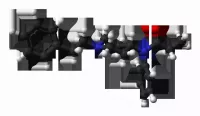
Fentanyl is a potent synthetic opioid analgesic significantly stronger than...

The Super Bowl is the annual championship game of the...
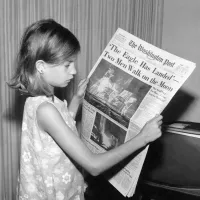
News encompasses information about current events disseminated through various media...
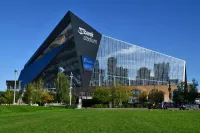
U S Bank Stadium located in downtown Minneapolis Minnesota is...

Chicago is the most populous city in Illinois and the...
Trending
Keldon Johnson is an American professional basketball player currently playing for the San Antonio Spurs in the NBA Prior to...

6 months ago Potential NBA Trades: Dillon Brooks, DeMar DeRozan, and the Rockets' Draft Pick
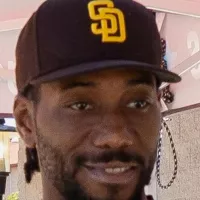
5 months ago Clippers provide update on Kawhi Leonard's condition after injury struggles, future plans.
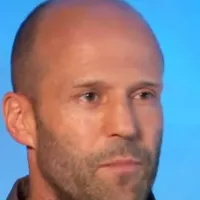
1 month ago Jason Statham's 'A Working Man' achieves streaming success despite mixed reviews, replacing The Beekeeper.

2 months ago Jamal Murray and Nikola Joki? discussed by David Adelman; Nuggets face Warriors and Suns.

8 months ago Tim Hardaway Jr. aims to continue father's playoff success, reflecting on impressive NBA career.
Popular

Tucker Carlson is an American conservative political commentator known for...

XXXTentacion born Jahseh Dwayne Ricardo Onfroy was a controversial yet...

Candace Owens is an American conservative political commentator and author...

Ben Shapiro is a prominent American conservative political commentator media...

William Franklin Graham III commonly known as Franklin Graham is...
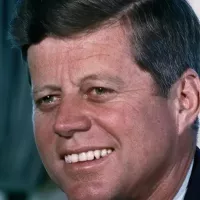
John F Kennedy JFK was the th U S President...
